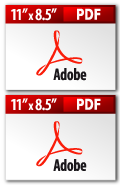Historical Timeline of Innovation
As long as 7,000 or 8,000 years ago, a spark of insight ignited many subsequent millennia of invention. Consider, for a moment, the nature of civilization in 5,000 or 6,000 B.C. Now imagine how our ancestors may have been preparing a first demonstration of a radical new transportation technology now known as the wheel.

A quick glance around our present-day environment, and nearly-instantly we are able to establish a sense for the awesome influence of the wheel. This single and profound innovation has fundamentally and permanently shifted civilization and human thinking. The wheel, in its most elementary existence, may be clearly seen in cars and trains, as well as shopping carts and office chairs. Extensions of the foundational principles have led to gears, pulleys, motors and a world of complex, productivity enhancing machines.
Interestingly enough, key attributes that were critical agents of the wheel’s broad adoption, may be observed in similar roles for other landmark innovations. A case can be made that one such attribute, is the inherent modular nature of the wheel. Completely separate and independent parts (a platform, axle, and the wheel, itself) must be brought together to deliver on the wheel’s value promise. This concept of modularity, has proven to be a springboard for many incremental opportunities. For instance, the modular nature of the wheel enabled its evolution into the fixed-wheel cart, the wheel-barrow, the chariot, and the horse-and-carriage. All are robust examples that expose the power inherent in modularity.
While language clearly operates in a completely different domain, a case is easily made exposing the tremendous elemental value of language’s underlying modular nature.

- Letters are generally phonetic components of language.
- When stacked together, letters form groupings called words…
(each of which, of course, is a discrete concept) - Words are strung together to form sentences. These aggregations of modular components at multiple levels deliver assertions, ask questions, or give commands.
Human beings are hardwired with a promising capability to envision new systems. Many people also exhibit the capability of coordinating & engaging resources to deliver the final product. Parts of each have combined to deliver persistent continuous innovation.
The Intraduce iconic timeline (available from the links below), has taken a large collection of innovation milestones and associated each of them with meaningful, graphical icons. The position of these elements on the timeline, and their position relative to each other, have exposed interesting and substantial insights… they have also served as an exhibit of our momentary state-of-the-art. They are, perhaps, the most significant developments incrementally serving our historical transportation needs.
- Roughly 350 datapoints in total
- 8,000 year span of history
- Culled from different “eras” of civilization (pre-print, print-era, digital-era)
Historians, archaeologists and anthropologists engage a healthy ongoing debate surrounding exactly when the ![]() wheel was first invented. When we consider the expansive scope of historical events, since recorded history began, one observation seems important enough to make mention: Our ability to pinpoint the specifics of when a particular innovation took place, is increasingly more accurate the closer we get to present day. Intraduce has prepared an innovative log-scale timeline, that positions these events on the timeline. This approach showcases the increasingly accurate picture of history, and also exposes interesting and inter-related attributes specific to the events. (Note: This approach is also fully consistent with insights offered by visionary inventor, author and futurist, Ray Kurzweil, from his collection of work. See Kurzweil’s Law for more):
wheel was first invented. When we consider the expansive scope of historical events, since recorded history began, one observation seems important enough to make mention: Our ability to pinpoint the specifics of when a particular innovation took place, is increasingly more accurate the closer we get to present day. Intraduce has prepared an innovative log-scale timeline, that positions these events on the timeline. This approach showcases the increasingly accurate picture of history, and also exposes interesting and inter-related attributes specific to the events. (Note: This approach is also fully consistent with insights offered by visionary inventor, author and futurist, Ray Kurzweil, from his collection of work. See Kurzweil’s Law for more):
- the time-between-significant-events has been shrinking all throughout history…
- the pace of innovation is seen to be accelerating…
- these phenomena appear consistent across all recorded periods of history…
Various versions of the timeline have been made available for download:
Super Hi-Res JPEG (2600 x 4000 px)
- 2600 x 4000 JPEG Image
- Configured for continuous viewing
- The image format is highly accessible and easily printable
- 2000 x 3000 JPEG Image (suitable for iPad/iPhone)
- Configured for continuous viewing
- The image format is suitable for viewing on mobile devices
Medium-Res JPEG (1300 x 2000 px)
- 1300 x 2000 JPEG Image (suitable for older smartphones & laptops)
- Configured for continuous viewing
- The image format is suitable for viewing on older mobile devices & laptops
- 8.5″ x 11″ page-size
- Configured so the page scrolls vertically, for continuous viewing
- The page-layout supports easy printing on letter-sized page printers
Tabloid-sized PDF (1-page PDF)
- 11″ x 17″ page-size
- A single page offers easy viewing and navigation
- Consistent with the design layout and intent
- Prints elegantly & legibly on a single tabloid-sized page





